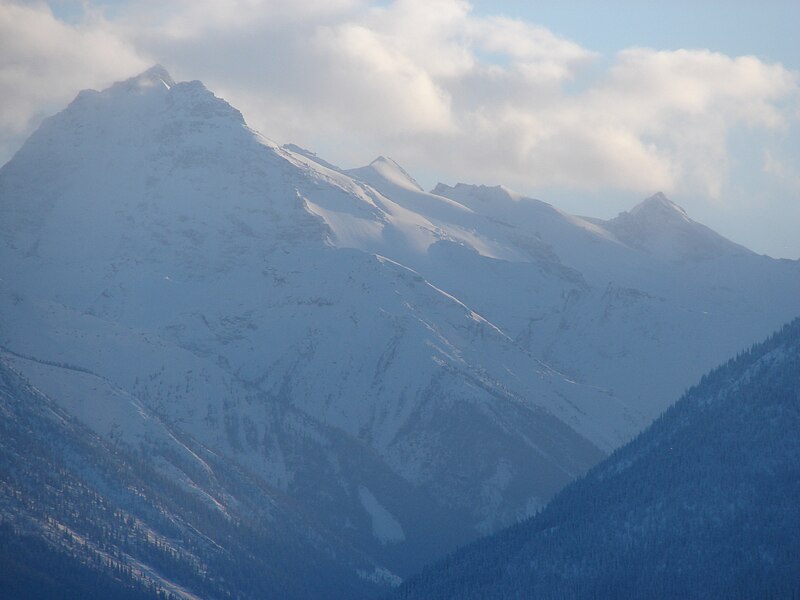Ngaliema or Mount Stanley is a mountain located in the Rwenzori range. With an elevation of 5,109 m (16,763Â ft), it is the highest mountain of both the Democratic Republic of the Congo and Uganda, and the third highest in Africa, after Kilimanjaro (5,895Â m) and Mount Kenya (5,199Â m). The peak and several other surrounding peaks are high enough to support glaciers. Mount Stanley is named for the journalist and explorer, Sir Henry Morton Stanley. It is part of the Rwenzori Mountains National Park, a UNESCO world Heritage Site.
Mt. Stanley consists of two twin summits and several lower peaks:
History

As early as the time of the Ancient Greeks, there were tales of mountains of snow and ice forming the source of the Nile River. Aeschylus talked of "Egypt nurtured by snows" and Aristotle noted 'Mountains of Silver, the source of the Nile' in the fourth century B.C. Ptolemy labeled these mountains in the correct location as “Lunae Montes†(The Mountains of the Moon) in his map published some 1800 years ago. According to the expedition account of the Duke of Abruzzi, this was actually a translation error from the name “white mountainsâ€, but the name has stuck through the millennia.
Despite the legends, the existence of these mountains was not confirmed outside of Central Africa until the arrival of Henry Morton Stanley. In 1876 he first glimpsed the range, then in 1888 he noticed what he first thought to be a cloud then later realized was the slopes of a mountain covered with snow.
For a number of years explorers attempted to reach the peaks but were always turned back by the thick vegetation, bad weather, disease, or lack of time. However, in 1906, the Duke of Abruzzi led an expedition replete with six scientists, four alpine guides, and the phenomenal photographer Vittorio Sella. With the help of over 300 porters, they climbed to the highest points of the six massifs in the range that at that time contained glaciers, including the highest peaks of Mt. Stanley. The ascent of Margherita Peak was made by the Duke, J. Petigax, C. Ollier, and J. Brocherel on a traverse from the summit of Alexandra Peak.
In the intervening years the area has been plagued by political instability, warfare and dictators, and malaria. Additionally, the once magnificent glaciers have retreated profoundly. Three massifs have lost their ice entirely. Mt. Baker only has a few minor remnant glaciers, and Mt. Speke a single remaining glacier of any consequence. Mt. Stanley is currently the only peak in the range that still contains extensive glaciation. Recent studies indicate that the ice may be entirely gone by the year 2025.
Expeditions

First Successful Attempt
Mt. Stanley was first climbed in 1906 by Duke of the Abruzzi, J. Petigax, C. Ollier, and J. Brocherel. Margherita Peak is named after Queen Margherita of Italy.
References

External links
- Information about Mount Stanley and the Ruwenzori Range
- Mount Stanley on Peak Bagger
- Mount Stanley on the Peakware World Mountain Encyclopedia
- [1]

Posting Komentar